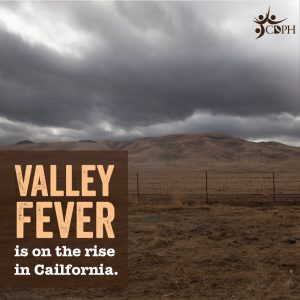Sacramento, CA– Health officials are cautioning residents across California as a potential increased risk for Valley fever looms due to high rainfall during the past winter. The California Department of Public Health (CDPH), is urging the public and healthcare providers to be vigilant, particularly during August, which has been designated as Valley Fever Awareness Month.
CDPH Director and State Public Health Officer, Dr. Tomás Aragón, emphasized the importance of recognizing the symptoms of Valley fever for early detection. “California’s dry conditions, combined with recent heavy winter rains could result in increasing Valley fever cases in the coming months,” Dr. Aragón warned. “To protect yourself and your family, know the symptoms of Valley fever, which will help ensure early detection. Individuals with lingering cough and fatigue should talk to a healthcare provider about Valley fever, especially if they have been outdoors in dusty air.”
Valley fever, also known as coccidioidomycosis or “cocci,” predominantly affects the lungs and can cause prolonged respiratory symptoms such as cough, fever, chest pain, fatigue, or tiredness. These symptoms can be debilitating, leading to work, school, and activity disruptions.
The University of California, Berkeley, in collaboration with CDPH, conducted research revealing that the fungus responsible for Valley fever becomes less active during droughts but thrives when the rains return. Consequently, the wet winter experienced in California may lead to an increase in Valley fever cases during the summer and fall. California typically reports around 20,000 Valley fever cases annually, with the majority coming from Arizona and California, and the number of cases is on the rise. The Central Valley and Central Coast regions, encompassing Kern, Kings, San Luis Obispo, Fresno, Tulare, Madera, and Monterey counties, have historically had the highest rates of Valley fever. However, the changing climate has resulted in an increase in cases in other parts of the state, including the Northern San Joaquin Valley and Southern California.

